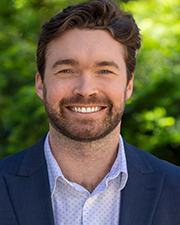Dealing with car-oriented design in a world crowded with more and bigger cars - by Thomas House

Despite intense efforts in the Boston area to get more people onto public transportation, it has escaped nobody’s notice that the streets are more clogged than ever with cars.
And despite efforts to get people everywhere into electric vehicles, not only are there more cars, but they’re bigger. And gas-powered.
Part of the reason for this is sociological - it has long been established that an increased supply of a necessary resource (coal, oil, money) will not increase efficiency, but will instead increase the rate of consumption. This is the Jevons Paradox, which we’ve discussed before, but for the curious it is worth your time to explore this further - start with Wikipedia.
Another part of the reason is physics, a principle typically referred to as energy density. To spare you a page full of equations, consider that a fully-charged Tesla battery is equivalent to three gallons of gasoline.
Ergo, more - and bigger - gas powered cars.
Attention must be paid
This is not an article about getting people out of their cars.
Not only is our office in New Hampshire, far from any public transportation, we are also not in the business of quixotic, headlong charges at the windmills of sociology and physics. That’s business we’ll leave to the politicians on Beacon Hill.
But we are of the opinion that the built environment needs more car-oriented design, not less. Because even if you get people out of their own cars, it’s only because they will get into an Uber instead, at least as long as venture capital continues to subsidize your ride.
Let’s start with what is known hereabouts as ‘pahking.’ Even TOD projects require consideration and provision of this.
The ideal is to get cars out of the weather, and the best way to do this (local codes permitting) is with first-floor or underground parking, which has a couple of immediate benefits. It removes heat-island and runoff effects for important environmental considerations, and reduces the footprint of a project which can have significant financial benefits.
And not only are the cars out of the weather, they are out of sight and potentially more secure. For developers with reliable renewable energy sources, installing charging stations for electric cars, secure sheltered parking is better than the alternative. Finally, in snowpocalypse years, there is less impact on snow removal inconveniences and budgets.
Second-best (and still exceptional options) include carports, which we use to support solar panels in order to mitigate potential heat island effects by converting it to energy, and permeable pavement to eliminate runoff effects. New England is well-watered with many lakes, ponds, streams, and rivers, so there is a considerable reduction of environmental impact with permeable pavement. And you can convert these to LEED points, if you’re keeping score.
Commercial projects can also use these same strategies, though higher capacity will reduce sheltered parking unless a parking garage is part of the plan.
And even then, let’s contemplate a trip…
….Back to the Futuristic
In space-age America, there were popular futuristic illustrations (and toys for boys) that envisioned automated parking. Well, this is the future, and under the right conditions this may be an attractive option to maximize parking in minimal space.
The most important condition is that their usage is optimal when volume is balanced, that is, without dramatic peaks of high volume. In the balanced use cases, automated or semi-automated parking systems can increase the density of available parking and eliminate the need for ramps systems.
Sometimes called robotic parking systems, they have additional benefits:
• The cars are more secure (not publicly accessible)
• No hunting for parking spaces
• Shorter construction time
• Minor parking lot dings and dents are eliminated
In a residential project, occupants will quickly understand this kind of system and it will become second nature. Some commercial projects will make an attendant available to manage the parking - but there is no hunting for a space or walking around the facility; the slip and the controls are only a few feet away.
These can be installed above or below grade, and parking density is typically increased 2:1, though that can vary depending on your application.
And regardless of what you build, as long as venture capital will subsidize your ride, you can leave your car in the spiffy new parking arrangement you’ve created, and transfer the wear and tear to an Uber driver.
Thomas House, AIA, is principal of THA Architects, LLC, Stratham, N.H.
Reveler Development celebrates final phase of work at The Levee - new 51-unit apartment building in Biddeford


Residential is here to untie the office space doom loop - by Thomas House

Maine multifamily outlook: Opportunities in Portland, Bangor, and Lewiston-Auburn - Blake Wright and Kristie Russell
The multifamily market in Maine’s major cities presents a diverse range of opportunities for investors. We looked at the potential benefits and unique characteristics of three major submarkets in the state: Portland, Bangor, and Lewiston-Auburn. The information below is based on research done in CoStar and county registries, and focuses on multifamily properties that have four or more units.

Interest rates and inflation - by Matthew Bacon
As we all know, interest rates have been changing drastically, with movement in both directions, depending on the type and term of financing. The Federal Open Market Committee has taken drastic action in efforts to curb abnormally high inflation, but it hasn’t controlled labor cost growth to the extent that was intended.


 (1) (1).png)





.png)


.png)